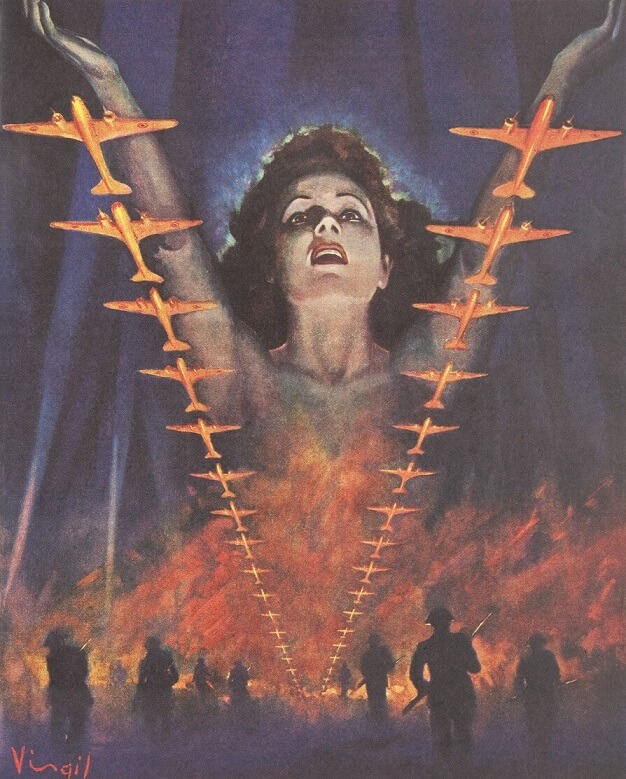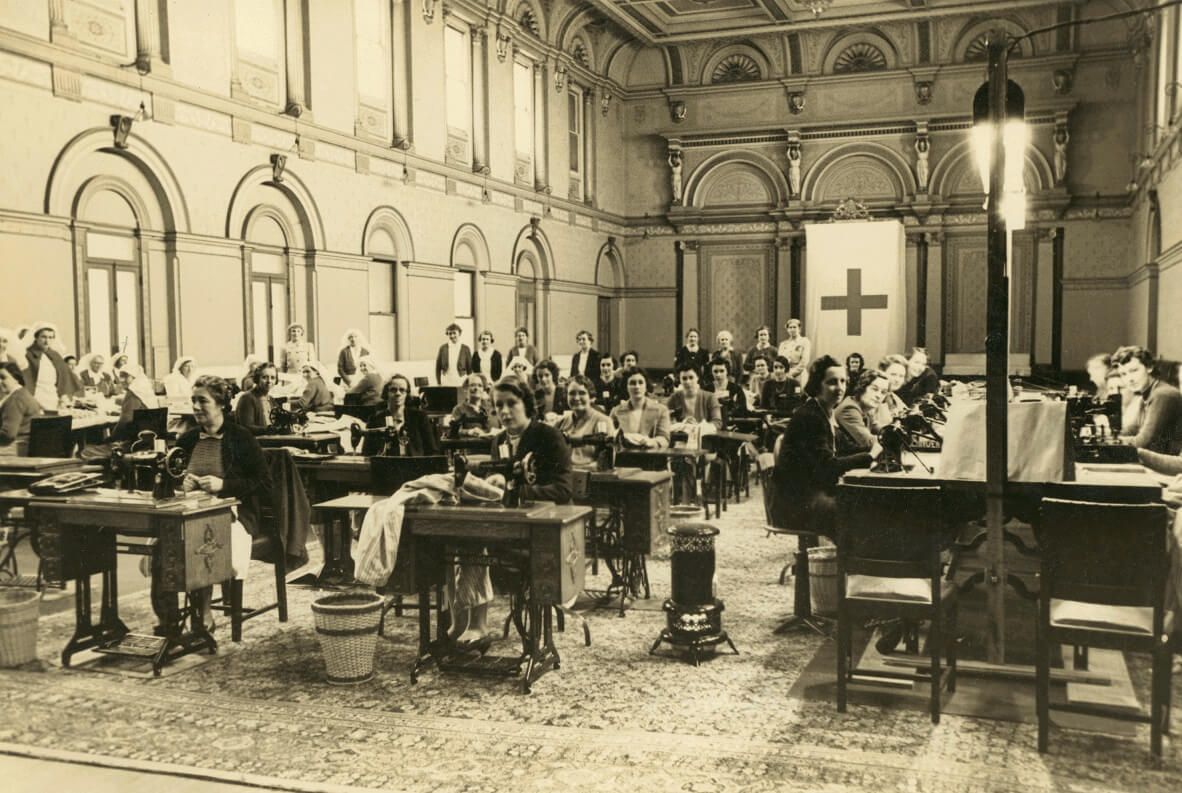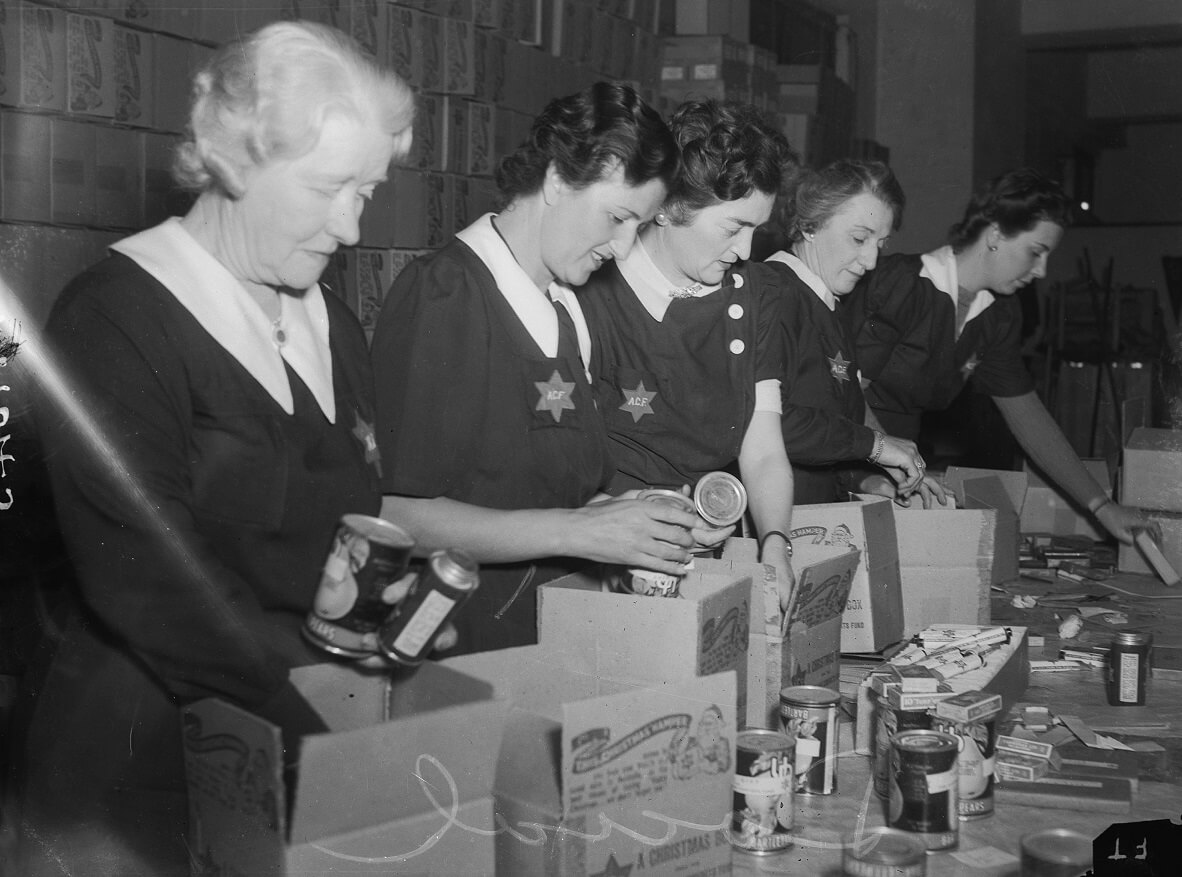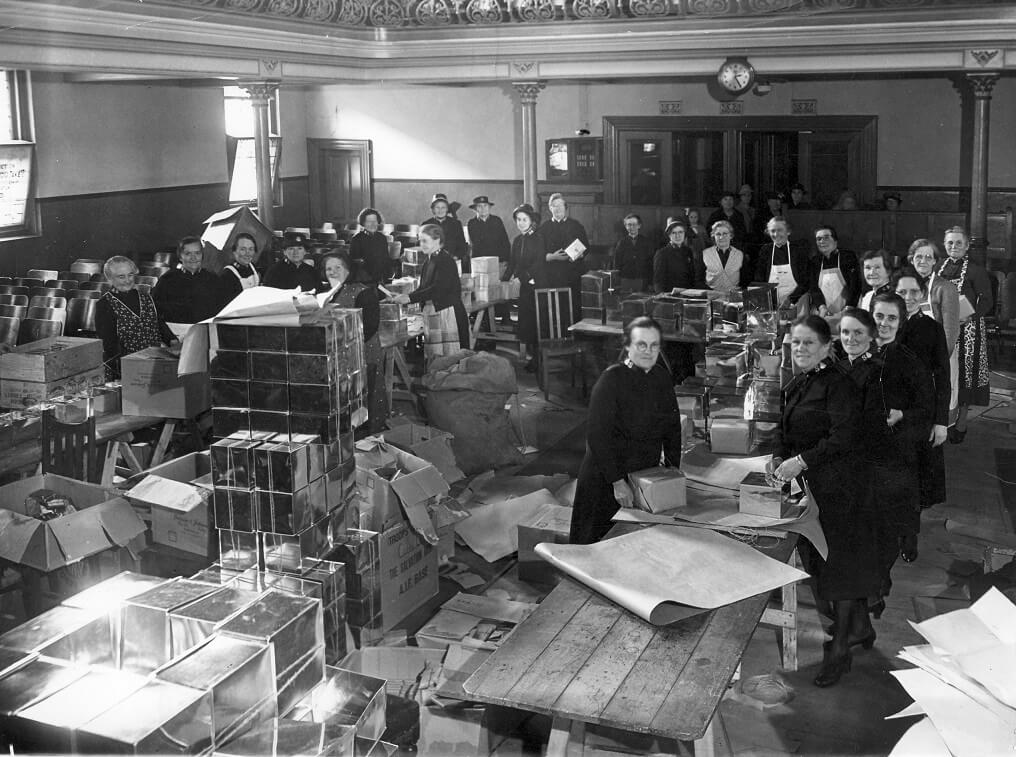On the declaration of war, Australia’s charitable network swung into action immediately. Some organisations, like the Australian Red Cross and Australian Comforts Fund, had continued in operation since their formation during the Great War, and could scale up their operations quickly. The Red Cross in particular was well established as a domestic response organisation. Most recently (January 1939) it had coordinated relief operations for those affected by the ‘Black Friday’ bushfires in Victoria. Other organisations followed suit – the Salvation Army, Young Women’s Christian Association (YWCA), the Country Women’s Association (CWA) and the Housewives’ Association to name just four. The National Council of Women was also active, creating a Women’s National Volunteer Register to help direct volunteer labour where it was needed.
Who were the volunteers?
Women were the mainstays of these organisations and from 1939 they joined in huge numbers. Many saw volunteer work as a way to ‘do their bit’ for the war effort. The Australian Red Cross and Australian Comforts Fund were the two largest organisations. In 1940 the Australian Comforts Fund had about 22,000 members in Victoria, with many branches in regional areas. The Australian Red Cross was also active in country Victoria, although its national headquarters was in Melbourne. It ran very successful annual recruitment drives across Australia throughout the war, and increased its membership from about 260,000 in 1941 to 450,000 in 1944. In a total population of only some seven million, this was an extraordinary volunteer force.
Many of these members were middle-class women with the means and the leisure to donate their time. Both organisations encouraged their members to purchase special uniforms and badges, an expense that was probably beyond the means of many working women, and their activities often took place during the working day. The reliance of these organisations on middle-class women became very evident in 1942 when the Federal Government made an attempt to ban domestic service, redirecting servants into munitions and other essential industries. The proposal was soon withdrawn, following an outcry from organisers in the voluntary associations, who argued that their membership depended on domestic support at home.
Of course such support was never available to working-class women, but women in working-class suburbs certainly joined as well. The Coburg branch was formed by the wife of a local printer, a Mrs Morgan. The mother of eight children, Mrs Morgan had left school at 14, but managed the Coburg branch with admirable efficiency. Shirley, a young deserted mother in northern Victoria, also volunteered, along with her mother, for both the Red Cross and CWA, despite her precarious economic position. Of course women were not the only members of these voluntary associations, older men and those unfit for active service, also joined voluntary organisations, especially those involved in civil defence, but women made up the bulk of the membership. Government was well aware of the value of the work of these organisations. When the Manpower Board expanded its powers to women, exemptions were often granted to women involved in voluntary work.
Working women also performed voluntary work. Almost all workplaces established Patriotic Funds that collected donations or organised fund-raising events, and by the end of the war there were more than 8,000 of these funds associated with local towns or businesses. It is estimated that funds like these raised the extraordinary sum of £28M during the war – or the equivalent of about $1.6 billion. In addition to their fundraising activities many women knitted or wrote letters to soldiers during their lunch hours, or stayed back after work to do voluntary work for organisations. Some companies ‘donated’ their employees’ time in this way, providing a token amount for ‘tea money’.
Children also played their part in raising money for the war effort. Many young girls found an introduction to voluntary work through the Junior Red Cross, while others sold raffle tickets, performed in concerts or collected salvage for recycling. Those who could knit made socks for soldiers in the evenings.
Volunteers at work
The tasks performed by voluntary groups varied widely. The Australian Red Cross was recognised by the Australian Government as an official provider of aid to sick, injured and maimed servicemen and their families. Both during and after the war it also performed a hugely valuable service in attempting to trace wounded or missing servicemen, or those held in prisoner-of-war camps. Members packed supplies for troops, trained in first aid, visited hospitals and raised funds.
The able-bodied servicemen and women were the focus of activities by the Australian Comforts Fund, Young Men’s (and after 1942 Women’s) Christian Association and the Salvation Army. They provided additional supplies (‘comforts’) to serving men and women and ran recreational facilities and rest rooms, providing cheap accommodation and meals to visiting servicemen on leave. Volunteers cooked and served meals and maintained the facilities. Many groups raised funds to supply and pack regular hampers to the troops, especially at Christmas.
The Grand Ballroom of Government House turned into a Red Cross sewing room, c. 1940
Reproduced courtesy University of Melbourne Archives
Note the single small heater on the floor near the front.
‘Comforts’
The basic kit issued to Australian servicemen and women was just that: it included few ‘comforts’. Once the American servicemen arrived, the difference in goods supplied became even more evident and organisations like the Australian Comforts Fund tried to bridge the gap. Men were sent parcels containing items of additional clothing like singlets and pyjamas, but they were also supplied with cigarettes, sweets, razor blades, soap, toothbrushes, stationery, pencils and postcards. After 1942 serving women were provided with a kit containing sanitary pads, talcum powder, skin tonic and vanishing cream. An extraordinary volume of goods was assembled and sent by these groups, including many thousands of packages, tins of food, cakes and, of course, thousands of pairs of knitted socks.
Australian Comforts Fund members packing Christmas hampers, August 1944
Reproduced courtesy Australian War Memorial
Christmas hampers included a plum pudding, a fruit cake, a small tin of fruit and a can of Nestlé cream. The smart uniforms and badges were supplied by members themselves and were probably a barrier to poorer women joining the organisation.
Volunteer Salvation Army women in the main hall of the Melbourne City Temple, packing goods to send to the troops oversea 25 November 1944
Reproduced courtesy Salvation Army Heritage Centre
Dancing for Victory
Victorian women were also urged to ‘do their bit’ as ‘Victory girls’, by helping to entertain Australian and Allied servicemen on leave. Many were happy to oblige, especially after the arrival in 1942 of the first groups of American servicemen. Women volunteered to cook and serve meals, to clean and wait on tables and to act as dance partners for servicemen looking to enjoy their spells of leave.
Author: Margaret Anderson
Next page: The Yanks are Coming!




